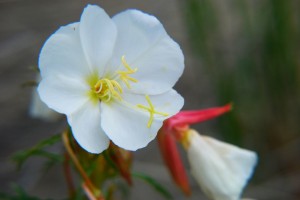
News/Reports
Field’s Lease Overview: Physical and Biological
Original Purpose: To protect a small example of the antelope brush community, the most
arid shrub-steppe ecosystem in Canada
Physical: Rocky knolls thinly covered with sandy soil form the central axis of this reserve. These are bordered by sandy flats on their west and south sides, and a steep northeast-facing slope along the northeast boundary. A small draw containing an intermittent stream occurs in the extreme northwestern corner of the reserve. Aridity is accentuated on parts of this site which have shallow and/or sandy soils.
Biological:The natural vegetation here represents the northern extreme of the Upper Sonora Life Zone which extends from northern Mexico to the southern Similkameen and Okanagan valleys in British Columbia. Both shrub-grassland and grassland communities are present; trees are absent. Plant communities present are the antelope brush-bluebunch wheatgrass type on sandy areas around the knolls, the bluebunch wheatgrass-big sagebrush association on clay to sandy loam soils, and sand dropseed-red three-awn grassland on sandy terraces. The latter is one of the most restricted grassland types in British Columbia, now largely supplanted by agricultural land uses.
Wildflowers here include arrowleaf balsamroot, mariposa lily, long-leaved fleabane, hairy golden-aster, white clematis, bitterroot, yellow bell, alumroot, brittle prickly-pear cactus, and desert-parsley.
Wildlife recorded on the reserve includes yellow-bellied racer and gopher snakes, coyotes, and a variety of birds. Birds noted to nest on the site are the California Quail, Western Kingbird and Rock Wren. Other typical species here are the Western Meadowlark, Mourning Dove, Poorwill, Magpie, Northern
Oriole, House Finch, and White-crowned Sparrow.
Red Listed:
pale evening primrose
Behr’s Hairstreak
The Dalles milk-vetch
Badger.. endangered
Significant:
Douglas rabbitbrush (aka green rabbit-brush)
tufted phlox
long-leaved phlox
Flora:
alumroot (Heuchera spp.)
antelope-brush (Purshia tridentata)
aster, golden (Heterotheca villosa)
aster, hairy (Aster pilosus)
baby’s breath (Gypsophila paniculata)
balsam-root, arrow-leaved (Balsamorhiza-sagittata)
bitterroot (Lewisia rediviva)
cactus, brittle prickly-pear (Opuntia fragilis)
clematis, white (Clematis ligusticifolia var. ligusticifolia)
desert-parsley (Lomatium spp.)
dropseed, sand (Sporobolus cryptandrus)
evening-primrose, pale (Oenothera pallida ssp. pallida)
fleabane, linear-leaved (Erigeron linearis)
lily, mariposa (Calocortus spp.)
milk-vetch, The Dalles (Astragalus sclerocaruis)
phlox, long-leaved (Phlox longifolia)
phlox, tufted (Phlox caespitoae)
rabbit-brush, green (Chrysothamnus viscidiflorus var. lanceolatus)
red three-awn (Aristida purpurea var. longiseta)
sage, bog (Salvia uliginosa)
wheatgrass, bluebunch (Pseudoroegneria spicata)
yellow bell (Fritillaria pudica)
Fauna
Badger (Taxidea taxus)
Coyote (Canis latrans)
Dove, Mourning (Zenaida macroura)
Gopher Snake, deserticola spp. (Pituophis catenifer deserticola)
Kingbird, Western (Tyrannus verticalis)
Finch, House (Carpodacus mexicanus)
Behr’s Hairstreak (Satyrium behrii)
Magpie, Black-billed (Pica hudsonia)
Meadowlark, Western (Stumella neglecta)
Oriole (Icterus spp.)
Poorwill, Common (Phalaenoptilus nuttallii)
Quail, California (Callipepla californica)
Racer, Blue (Coluber constrictor foxi)
Sparrow, White-crowned (Zonotrichia leucophrys)
Woodpecker, Lewis’s (Melanerpes lewis)
Wren, Rock (Salpinctes obsoletus)

